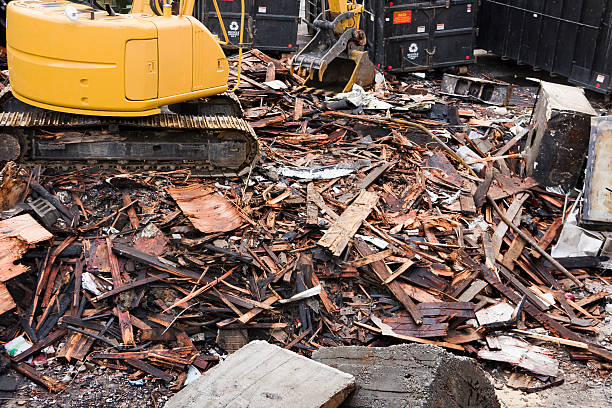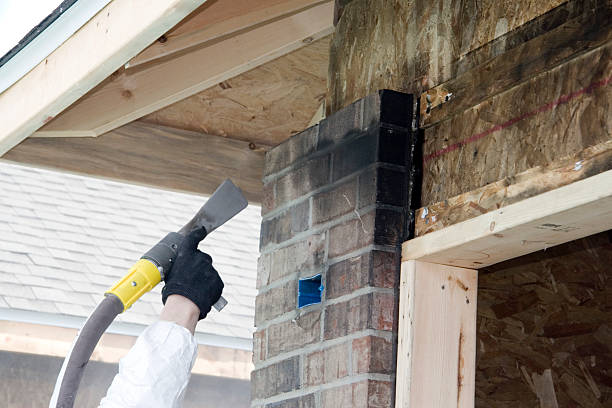Fire can devastate a property in minutes, leaving behind more than just visible destruction. From soot-covered walls to water-soaked floors, the aftermath is often overwhelming. That’s why understanding the fire restoration process—from fire cleanup to final repairs—is critical for a safe and successful recovery. This guide explains how professionals restore homes and businesses after fire incidents and why timing, tools, and technique matter.
The Hidden Impact of Fire Damage
While flames cause the most obvious destruction, the true scope of fire damage goes beyond what you can immediately see. Smoke and soot infiltrate walls, ceilings, and HVAC systems, while water used to extinguish flames causes additional complications like mold and structural weakening.
Key Types of Fire Damage
- Flame Damage: Burns, charring, and structural compromise
- Smoke Damage: Stains, odors, and residue in hidden places
- Water Damage: Mold risks, soggy insulation, warped flooring
- Soot Residue: Corrosive black dust that clings to surfaces and electronics
These combined effects make professional fire restoration more than just a cleaning job—it’s a complex rebuilding process requiring proper planning and expertise.
Step-by-Step Fire Restoration Process
To fully recover after a fire, each phase of the restoration process must be done in the right order with careful attention to detail.
Step 1: Inspection and Assessment
After firefighters extinguish the blaze and the site is cleared for safety, restoration experts evaluate the structural damage. They inspect floors, walls, wiring, and air ducts to determine the scope of the work and create a restoration plan.
Step 2: Property Securing
Temporary fixes like boarding up broken windows or tarping roofs are essential to protect the site from weather or trespassers. This step also ensures that ongoing damage doesn’t worsen while the work is being planned and executed.
Step 3: Fire Cleanup and Smoke Removal
Professionals begin by clearing out debris, removing salvageable items, and cleaning soot-covered surfaces. Air scrubbers, HEPA vacuums, and ozone machines are used to clear toxic particles and odor from the space. Fire cleanup at this stage is essential not only for cleanliness but also to improve air quality and health safety for anyone entering the property.
Step 4: Drying and Dehumidification
Since water used to put out the fire can saturate building materials, drying the property is crucial. Restoration teams use high-powered dehumidifiers and air movers to prevent mold growth and further damage to wood or drywall.
Fire Damage Demolition: When Materials Can’t Be Saved
Some parts of a structure simply can’t be restored. In these cases, fire damage demolition becomes the next step. Demolition involves carefully removing charred wood, damaged drywall, and other unsalvageable components.
Why Demolition is Sometimes Necessary
- Safety Risks: Burned materials can collapse or harbor mold
- Contamination Control: Soot and smoke residue often embed deep into porous surfaces
- Faster Restoration: Removing ruined areas speeds up the rebuild process
Demolition is a highly controlled process and usually includes containment zones to prevent cross-contamination into unaffected areas. Professionals handle the debris disposal according to safety codes and local regulations.
Rebuilding and Final Restoration
After the property is cleared, cleaned, and dried, the reconstruction begins. This phase varies depending on how much of the property was damaged. It might involve rebuilding walls, replacing roofing, restoring insulation, painting, and installing new fixtures.
Contractors often work closely with insurance adjusters at this stage to ensure all work is approved and compensated under the claim. Quality assurance and final inspections ensure the home or business is safe and fully functional before returning to use.
Why Professional Fire Restoration Matters
DIY fire restoration is not recommended. Between structural hazards, contaminated air, and hidden damage, the process is best left to professionals. Certified fire restoration experts:
- Use specialized tools and techniques
- Understand health and safety codes
- Speed up recovery with experience and manpower
- Coordinate with insurance providers for faster claims
By relying on a skilled team, you reduce long-term risks and ensure that your property is restored efficiently and safely.
Conclusion
Recovering from fire is never easy, but understanding the process—from fire cleanup to fire damage demolition—helps you make informed decisions when it matters most. With the right professionals, tools, and timeline, you can rebuild what was lost and return to a safe, secure, and welcoming space.





